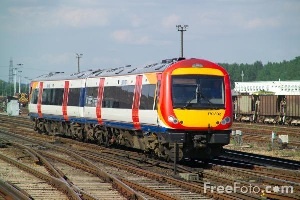Rail fares to rise by average of 6.2 per cent

Ahead of January fare rises, a spokesperson for the Association of Train Operating Companies said
‘’Train fares will rise by an average of 6.2% in January. We know times are tough for many people but these increases will ensure that Britain can continue investing in its railways.
“Even with these fare increases, the money passengers spend on fares covers only half the cost of running the railways – taxpayers make up the difference. The government is sticking with the previous administration’s policy to cut the taxpayers’ contribution to the overall cost of running the railways.
‘’Above inflation fare rises are the result of a change in government policy in recent years which has sought to sustain investment in the railways by reducing the amount that taxpayers contribute and requiring passengers to pay more.
‘’More and more people are travelling by train and demand is expected to double in the coming decades so it is more important than ever that money is spent on providing better stations, more trains and faster services. Money invested through fares has helped to bring about record levels of customer satisfaction and punctuality.”
ADVERTISEMENT
Responding to reports about the use of a 5% flexibility on regulated rail fares, which are set by the Government, a spokesperson for the Association of Train Operating Companies said:
“Flex has been in place ever since privatisation, except for last year when it was suspended by the Government. It allows train companies to compete more effectively with coach operators and airlines as well as smooth out differences in prices in and around London.
“The system works like a traditional set of kitchen scales – if some fares go up above the average then others have to go down by the equivalent amount. This means that the increases and the decreases cancel each other out and that operators cannot increase fares on routes with lots of passengers and reduce them on routes with fewer passengers.”

